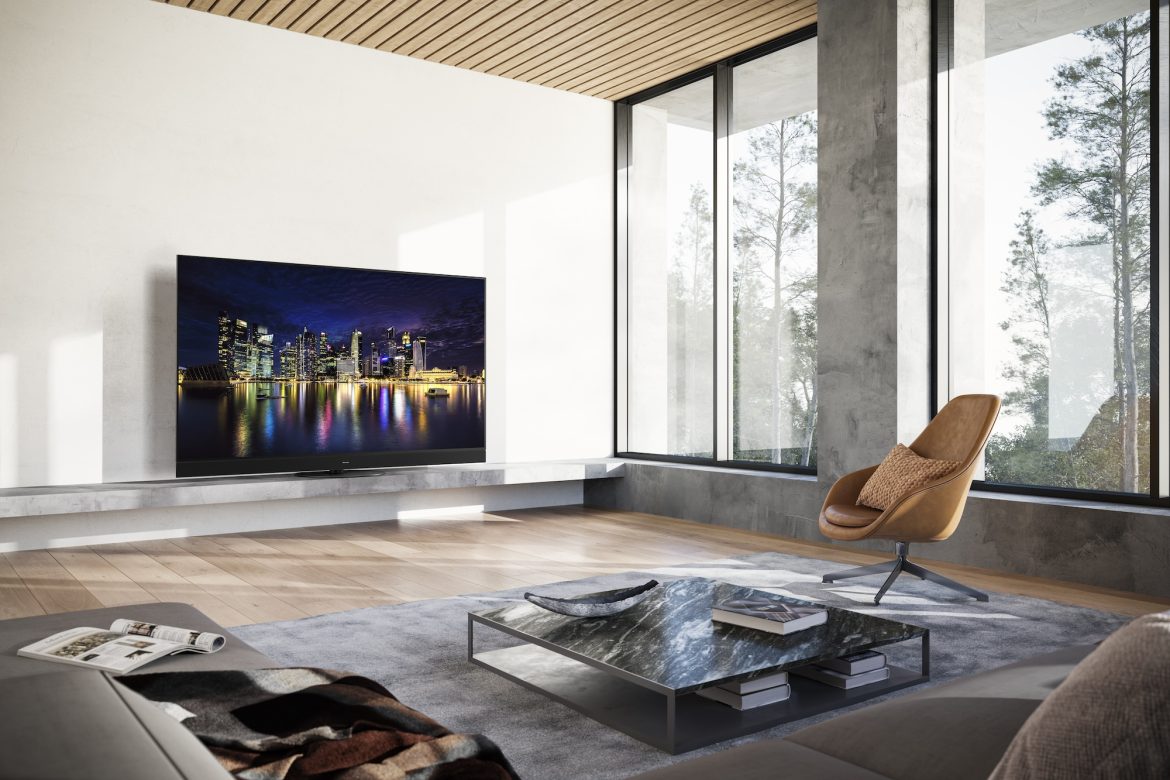TL;DR
The Panasonic MZ2000 elevates OLED performance with its new MLA panel, delivering up to 150% increased brightness for a stunningly vibrant HDR experience, especially on the 65" model. Its impressive integrated Atmos sound system provides an immersive audio experience, and the picture quality is phenomenal, offering exceptional accuracy that makes professional calibration almost unnecessary. While its smart TV platform is streamlined, the TV excels in movies and gaming with features like minimal input lag. Although it faces competition from QD-OLED, the MZ2000 stands out for its superior image processing and overall viewing experience. Dive into the full review to see if this flagship OLED is your next must-have for ultimate home entertainment.
It’s hard to believe it’s been almost a year since senses was in Berlin for Panasonic’s major product launch, joining other international tech media to witness the unveiling of the 2023/2024 flagship model, the Panasonic TX-65MZ2000 OLED. Positioned alongside this year’s 77″ MZ2000, two key observations stood out: 1) the 77″ screen size isn’t quite as imposing as one might expect in a typical living room, and 2) the 65″ model exhibited a noticeably brighter and more vibrant picture in direct comparison. As with last year’s LZ2000, the enhanced brightness, attributed to the new MLA panel, is exclusive to the 55″ and 65″ models. The central question remains: does the performance live up to the promise?
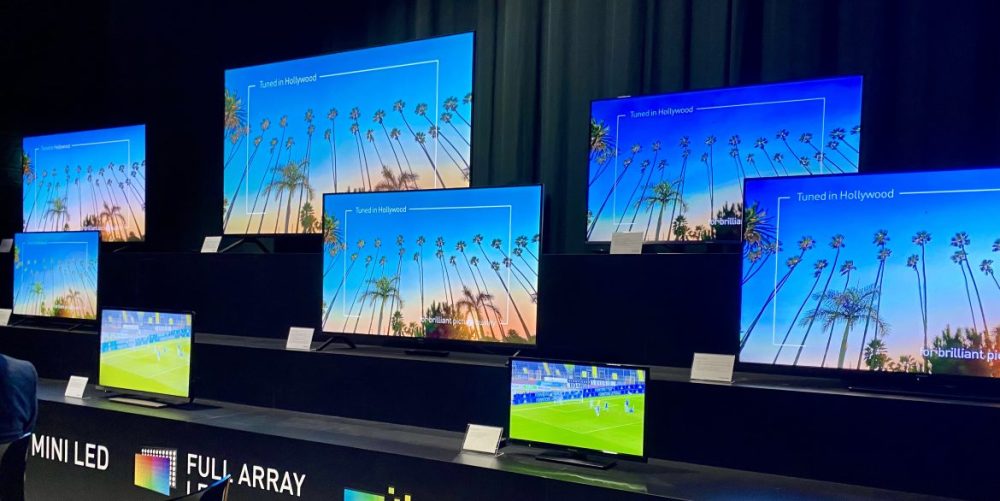
The Technology Behind the Panasonic MZ2000
Let’s delve into the MZ2000’s specifications, beginning with its centerpiece: the new panel. Designated Master OLED Ultimate, this premium OLED panel from LG incorporates Micro Lens Array (MLA) technology. MLA utilizes microlenses, in conjunction with Panasonic’s multi-layered cooling system, to achieve a brightness increase of up to 150% compared to previous generations. Maximum panel brightness is typically measured within a window representing 10% of the image area. The LZ2000, last year’s model, could sustain just over 1000 nits in standard picture mode. The MZ2000, however, achieves 1500 nits and maintains over 1000 nits across larger areas. This results in a more impactful, brighter, and more dynamic HDR experience across the entire image surface, although the real-world improvement is closer to 25-30% rather than the advertised 50%. Nevertheless, this remains a notable achievement for an already bright panel.
Externally, the MZ2000 mirrors the design of the previous three iterations of the 2000 series, particularly the LZ2000, with which it shares many similarities. The key advancements lie internally. The HDMI ports remain in the same location on the rear, and accessibility can be challenging when wall-mounting the TV (which we recommend). Careful planning is advised; connect all HDMI cables before securing the TV to the wall bracket. Continuing the trend from the past three generations, two of the four ports offer full HDMI 2.1 support (4K, 120Hz, VRR, and HDR). Port 2 should be used for eARC to facilitate optimal communication between the TV’s audio and your amplifier.
Panasonic typically releases several new models within the MZ series. It’s important to note that only the 55″ and 65″ MZ2000 models feature the MLA panel and integrated Atmos speakers for enhanced sound. The MZ1500 series and the 77″ MZ2000 utilize the Master OLED Pro panel, which does not include MLA technology.
Impressive Atmos Sound
The integrated sound system deserves attention. Panasonic has refined the placement and quality of the MZ2000’s built-in Atmos sound. Following calibration, which involves holding the remote control in front of you for approximately two minutes to allow its microphone to analyze the emitted sound waves, the resulting audio is both immersive and engaging. While the bass isn’t overwhelmingly powerful, it’s surprisingly warm and full for an integrated system. The spatial effects, facilitated by last year’s side speakers, are convincing, and in some ways more effective than certain dedicated compact Atmos solutions such as Panasonic’s own soundbar. This TV is suitable for standalone use in a living room, providing a good movie-watching experience (although we still recommend a dedicated home theater setup with rear speakers for true surround sound).
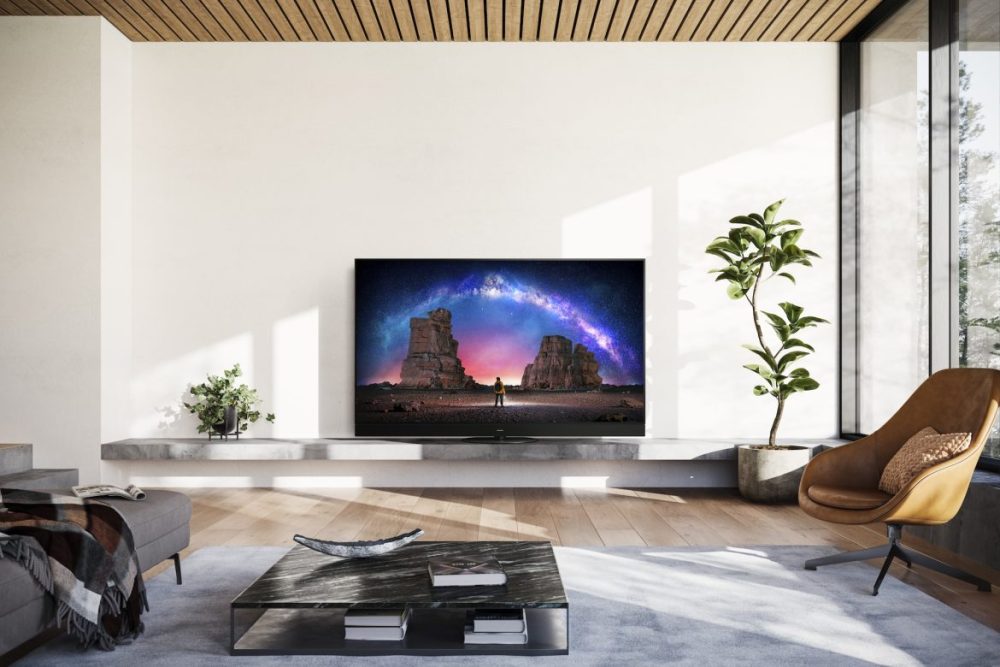
MyHomeScreen and a Final Name Change
This model marks the final iteration of MyHomeScreen (version 8.0), based on the discontinued FireFox TvOS. The system’s strengths lie in its compact size, speed, and simplicity. However, it is somewhat limited for a modern “smart TV.” Considering the accessibility and affordability of devices such as an Apple TV or Chromecast, the integrated smart TV functionality is less of a deciding factor for many users. Compared to the bloatware found on some competing platforms, Panasonic’s streamlined software is preferable. Panasonic has also announced that future models will utilize Amazon’s FireTV operating system (and will be designated Z95/93, breaking with the current naming convention). While FireTV’s presence in Sweden is currently limited, its adoption may grow in the future.
The Remote
The MZ2000 includes the same remote control as the previous three generations. While the brushed aluminum finish of earlier models is missed, the current remote is perfectly adequate, feeling smooth and lightweight. Backlighting remains a desired feature for movie viewing in darkened environments. Users can also utilize Panasonic’s mobile app or control the TV through other devices via CEC.
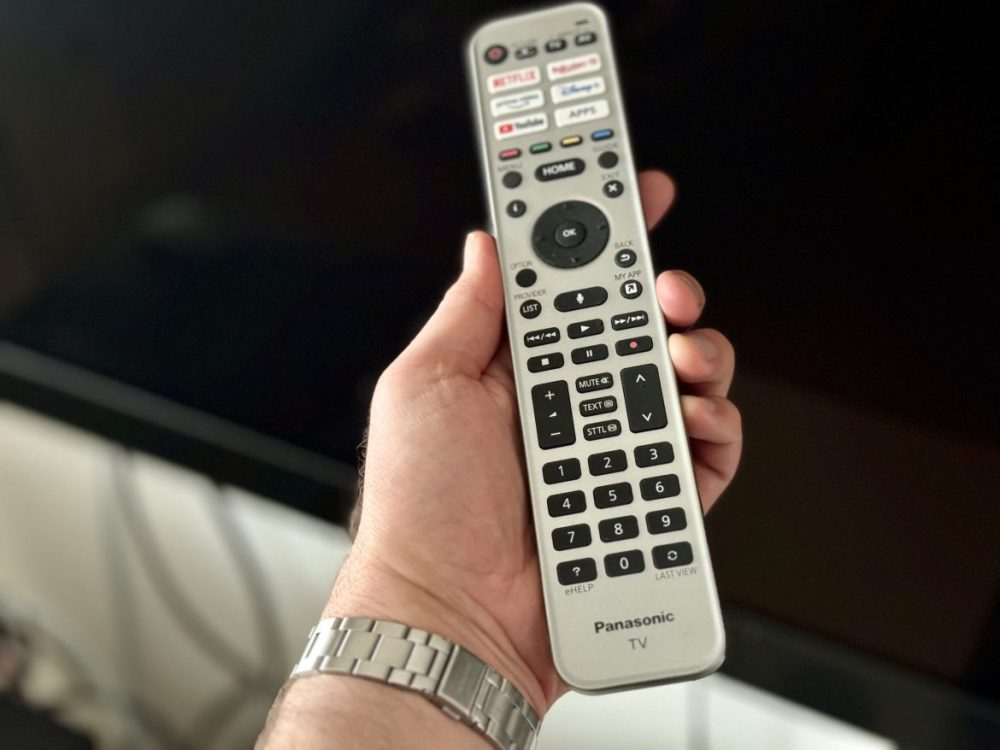
MZ2000 – Picture Quality
We’ve saved the most compelling aspect for last: the picture quality of the 2023/2024 Panasonic MZ2000. In short: it’s phenomenal. However, given the already exceptional performance of prior models, achieving groundbreaking improvements with existing technology is challenging. The MZ2000’s accuracy is comparable to the LZ2000, rendering professional calibration largely unnecessary. While calibration is still recommended for those who desire the utmost precision, the improvements will be subtle. Filmmaker mode disables unnecessary processing features, while Professional 1 and 2 offer excellent starting points for configuring the TV for daytime and nighttime viewing, respectively. Panasonic’s integrated light sensor provides effective automatic adjustments for users who prefer a single setting.
Our evaluation began with a variety of movie content, starting with SDR material (including TV broadcasts, HD Blu-ray content, and some streaming services). The MZ2000 excels at upscaling images to 4K, and its MPEG compression reduction capabilities enhance the quality of signals with weaker source material. Older DVDs exhibit surprising detail and clarity. Filmmaker Mode is ideal for SDR content, or users can create custom settings according to their preferences.
The visual experience becomes truly remarkable with HDR and 4K content. The MZ2000 supports all existing HDR formats and showcases the power and brightness of its new panel. Using the “Vivid” picture mode (not recommended for accurate viewing) provides a glimpse of the panel’s capabilities. Light sources, such as flashlights, produce realistic illuminated cones, with natural and subtle light bleed. Although exaggerated, the effect is impressive. While the measured peak brightness of 1500 nits represents a 50% increase over the previous generation, the actual improvement in Filmmaker Mode is closer to 25%. This enhancement is still noticeable, especially when comparing panels side-by-side and when using the MZ2000 in bright conditions. The TV’s power consumption, ranging from 90-125W depending on the input signal, is reasonable given its performance.
Within minutes of watching James Cameron’s visually stunning Avatar: The Way of Water on UHD 4K, viewers will be captivated by the experience. The exceptional resolution, vibrant colors, and realistic light reproduction create a captivating visual spectacle, reminiscent of Claude Monet’s observation: “I was born blind and only saw when I experienced the light that was reflected against me.” The effect is truly immersive.
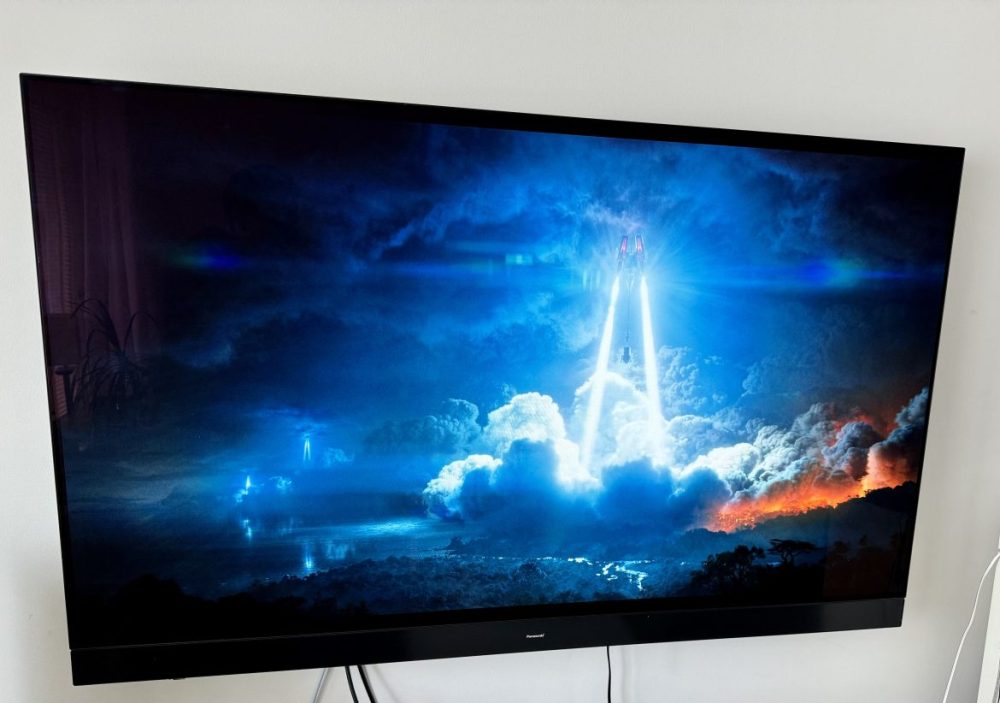
When evaluating more naturalistic content, such as the Stanley Kubrick classic Spartacus in UHD 4K, the film feels remarkably different from previous viewings on television broadcasts and VHS tapes. While the hairstyles and dialogue reflect its age, the reproduction of skin tones, the intensity of the sunlight, and the richness of the natural environment are comparable to modern films. The original film’s high resolution (equivalent to 12-16K) contributes to this impressive result.
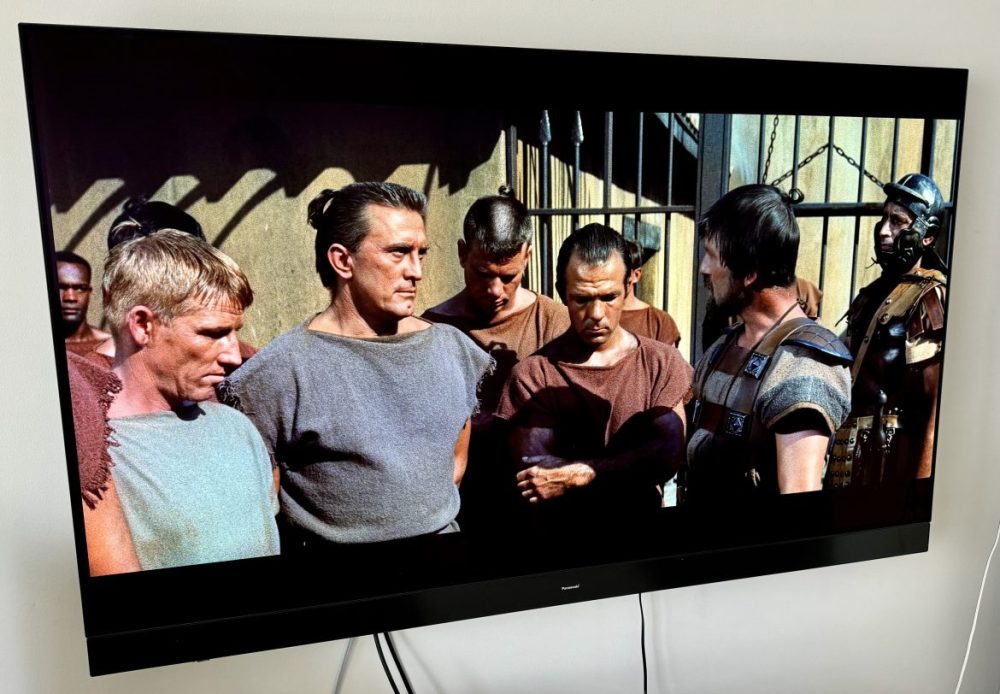
Animated and science fiction content are particularly well-suited for modern displays like this. While the availability of animated releases in 4K and HDR in Sweden is limited, imported titles such as The Prince of Egypt (anniversary edition) offer exceptional visual experiences. This Dreamworks classic, along with Puss in Boots: The Last Wish and Moana, are among the best 4K releases available. The 35mm transfer for The Prince of Egypt may appear slightly soft (given the film’s age), and the soundtrack may be underwhelming, but the depiction of light and darkness is stunning on the MZ2000, underscoring its status as a favorite film. For science fiction, virtually any Guardians of the Galaxy film in UHD 4K will provide a visually engaging experience. Films like these showcase the capabilities for which modern OLED displays were designed.
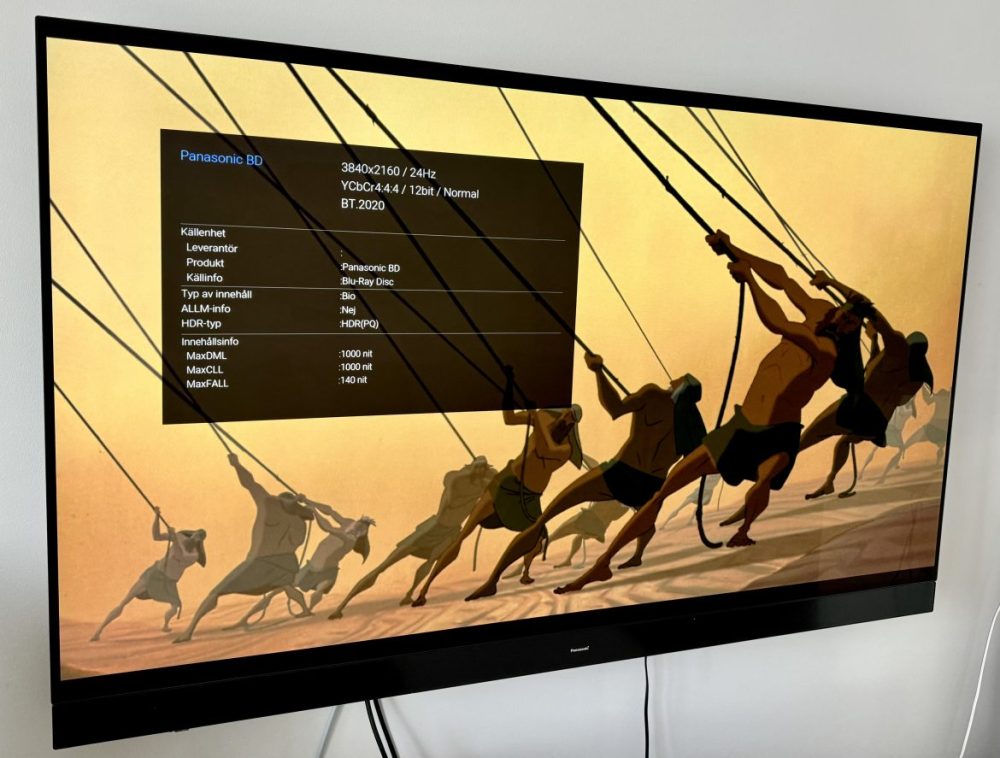
While we appreciate the original artistic intent of films, we acknowledge the advancements in display technology and the potential of higher frame rates (HFR). The traditional 24fps standard was initially determined by the limitations of lighting requirements, with image reproduction being less advanced. As a result, classic 24fps films exhibit a natural judder, which can be reduced with Intelligent Frame Creation (IFC). However, excessive smoothing can create a “soap opera effect,” which is undesirable. We also find the visual aesthetic of modern HFR films such as The Hobbit trilogy and Gemini Man to be problematic. James Cameron is developing a new “TruCut” system that aims to strike a balance between a cinematic image and modern smoothness, and we look forward to evaluating the results.
Streaming services are continuously improving their audio and video quality, although they still lag behind physical media. Given the popularity of streaming, it warrants discussion. Content from Netflix, HBO Max, and Disney+ generally looks excellent in 4K with Dolby Vision or HDR10+. Netflix and Disney+ offer optimized, built-in apps for Panasonic, which is beneficial for frequent users of these services. The bitrate is often lower than on disc, which can result in a slightly more pixelated image and less accurate reproduction of smoky, dark shades, potentially revealing artifacts. This varies depending on the specific production and its source. Users with standard subscriptions that do not support 4K and HDR may find the MZ2000 to be overkill and might consider Panasonic’s less expensive LED models.
The MZ2000 features a True Gaming mode that minimizes response time by disabling unnecessary image processing and providing easy tonemapping controls for HDR games. The Game Control Board app, accessible through the apps menu, allows users to quickly enable or disable gaming features and monitor VRR frame rates. A minor issue, as with last year’s model, is a limitation of 4K and 60fps with Dolby Vision on Xbox Series X due to the MediaTek chip used by Panasonic. However, this limitation is currently insignificant, as no games support DV, 4K, and frame rates exceeding 60fps simultaneously. HDR and Dolby Vision can also introduce latency due to increased processing demands, so experimenting with settings is recommended to find the optimal balance between image quality and responsiveness. Input lag in Game Mode, which is automatically activated when ALLM is enabled on the console, is approximately 14ms. With VRR enabled in 120Hz mode, input lag decreases to just over 5ms, a remarkable result for a display not specifically designed as a gaming monitor. Nvidia G-Sync and AMD Freesync are both supported.
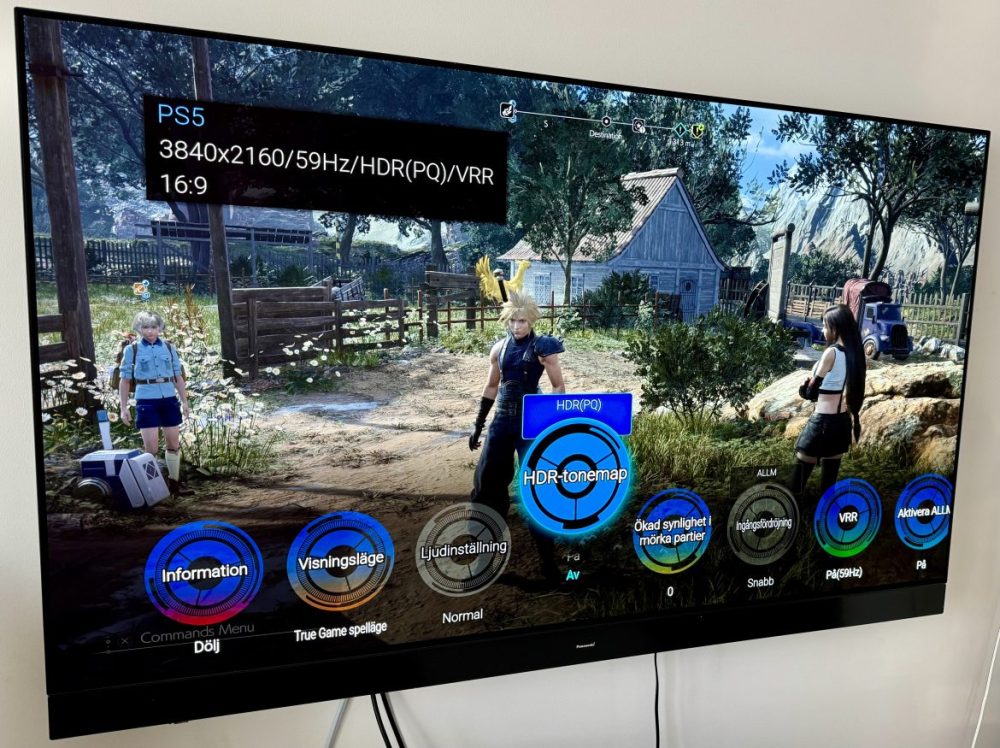
In summary, the Panasonic MZ2000 offers an exceptionally complete and immersive experience for movies, TV, and gaming. The MLA technology contributes to a brighter and more vibrant picture. The reported rainbow effect caused by direct sunlight on the panel (which should be avoided through strategic placement) was not observed during testing. While the same MLA OLED panel is available in the LG G3 at a slightly lower price, Panasonic’s HCX PRO AI processor and advanced panel cooling contribute to superior image processing and a more dynamic and natural image reproduction.
The question remains whether the WOLED technology, which Panasonic has confirmed for its upcoming flagship model, has reached its performance limit. QD-OLED technology is gaining prominence and is utilized by Sony and Samsung. QD-OLED offers slightly higher brightness and a more vibrant color palette, as WOLED’s white light can dilute the colors somewhat.
Overall, the Panasonic MZ2000 continues to rank among the top OLED TVs, perhaps even the best overall, although competitors may excel in specific areas. At approximately 40,000 SEK, it represents a significant investment, but delivers a unique and exceptional product. A 77″ model with QD-OLED technology and additional features would be a compelling prospect for the future.
In conclusion: a must-have for enthusiasts of film, TV, and gaming who demand the best possible experience.
Panasonic provided the unit for this review. The providers of review units have no editorial influence on our tests.
